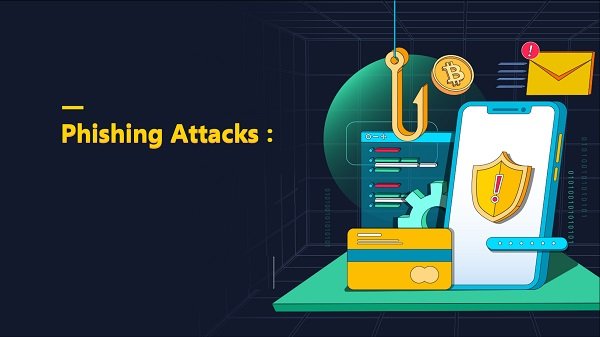Protecting Against Domain Phishing Attacks: Effective Strategies for Online Security
Domain Phishing Attacks

- What is a domain name phishing attack?
- What is an example of a phishing domain?
- What are the 5 types of phishing attacks?
- Is domain spoofing the same as phishing?
Domain phishing attacks pose a significant threat to individuals and organizations alike. These cyberattacks aim to deceive users by creating fraudulent websites that mimic legitimate domains, tricking them into revealing sensitive information or executing malicious actions.
Protecting against domain phishing attacks is crucial to safeguarding personal and business data. In this article, we will explore effective strategies and best practices to enhance online security and defend against domain phishing attacks.
Education and Awareness:
One of the most effective ways to protect against domain phishing attacks is to educate users about the risks and raise awareness about common phishing techniques. Regularly train employees and individuals on how to identify phishing emails, suspicious links, and fraudulent websites.
Teach them to scrutinize email senders, check for spelling and grammatical errors, and examine URLs before clicking on them. By empowering users with knowledge, they become the first line of defense against phishing attacks.
Multi-Factor Authentication (MFA):
Implementing multi-factor authentication adds an extra layer of security to user accounts, making it harder for attackers to gain unauthorized access.
By requiring users to provide additional verification, such as a one-time password or fingerprint scan, MFA mitigates the risk of stolen credentials being used to compromise accounts.
Enable MFA for email accounts, online platforms, and any system that stores sensitive information to reduce the impact of phishing attacks.
Secure Socket Layer (SSL) Certificates:
SSL certificates are essential for establishing a secure connection between a user’s browser and a website. They encrypt data transmitted between the user and the website, protecting it from interception or tampering.
Ensure that websites and online services use SSL certificates, as indicated by the “https” and padlock symbol in the browser’s address bar. This verification helps users identify legitimate websites and reduces the likelihood of falling for phishing attacks.
Anti-Phishing Tools and Software:
Employing anti-phishing tools and software can significantly enhance online security. These tools identify and block known phishing websites, detect suspicious links, and provide real-time protection against phishing attempts.
Anti-phishing software can also help prevent users from visiting malicious websites by alerting them to potential risks. Implementing robust anti-phishing solutions as part of an organization’s cybersecurity infrastructure strengthens defenses against domain phishing attacks.
Regular Software Updates and Patches:
Keeping software, operating systems, and web browsers up to date is critical for protecting against known vulnerabilities that attackers often exploit. Regularly apply security patches and updates to ensure that your systems are equipped with the latest security features.
Enable automatic updates whenever possible to streamline the process and minimize the risk of overlooking critical updates that could leave your organization susceptible to phishing attacks.
Email Filters and Spam Detection:
Leverage email filters and spam detection mechanisms to identify and block phishing emails before they reach users’ inboxes. Configure email servers and clients to filter out suspicious messages, flag potential phishing attempts, and send them to the spam folder.
Advanced spam filters use machine learning algorithms to analyze email content, sender reputation, and other indicators to accurately identify phishing emails and protect users from falling victim to deceptive schemes.
Vigilance and Reporting:
Encourage a culture of vigilance among users, urging them to report suspected phishing attempts promptly. Establish clear channels for reporting phishing emails, fraudulent websites, or suspicious activities.
Prompt reporting enables organizations to take immediate action, such as blocking malicious domains or notifying other users who may have received similar phishing emails.
By fostering a collaborative and responsive approach, the overall defense against domain phishing attacks can be strengthened.
Final Observation:
Protecting against domain phishing attacks requires a proactive and multi-faceted approach. Educating users, implementing multi-factor authentication, utilizing SSL certificates, employing anti-phishing tools, maintaining software updates, deploying email filters and spam detection, and fostering vigilance and reporting are key strategies to enhance online security. By combining these practices, individuals and organizations can significantly reduce the risk of falling victim to domain phishing attacks.
It is crucial to stay informed about evolving phishing techniques and continuously update security measures to stay one step ahead of cybercriminals. Prioritize online security, implement robust defense mechanisms, and empower users to identify and report potential phishing threats.
With a comprehensive approach to protection, you can safeguard sensitive information and maintain a secure online environment.




